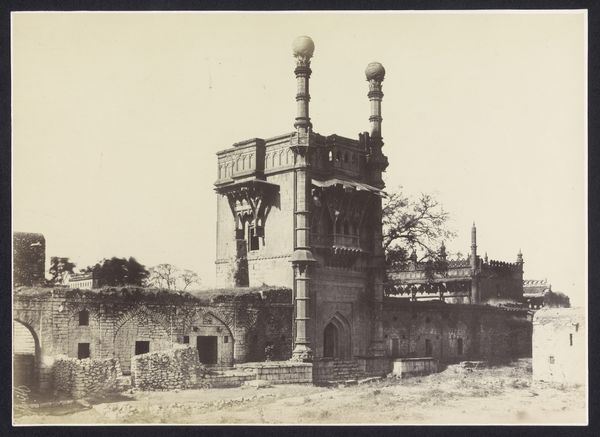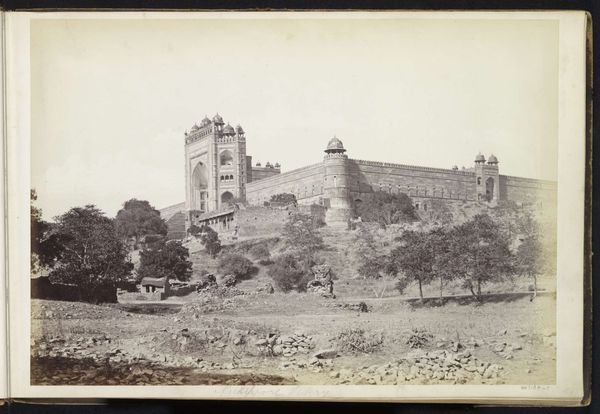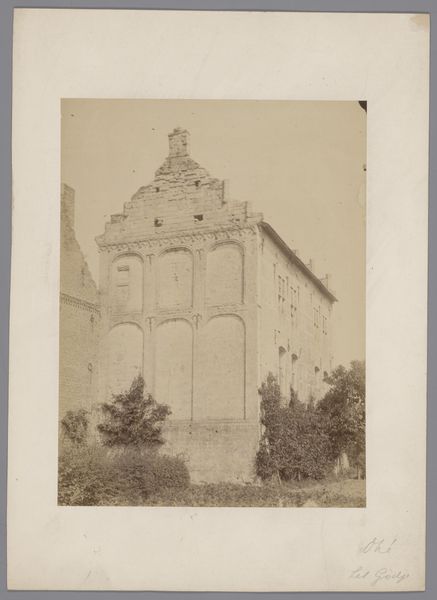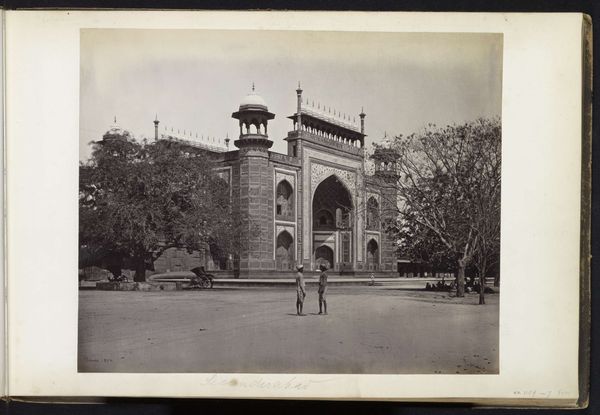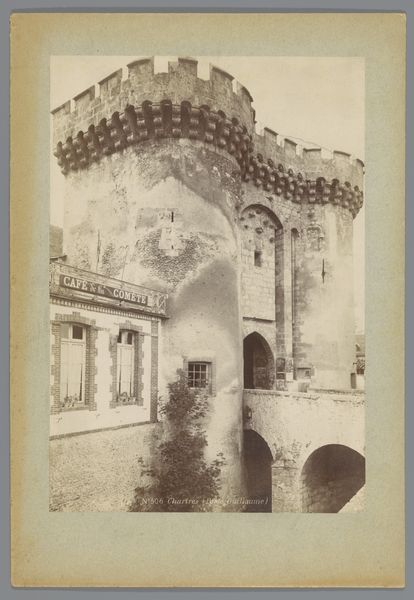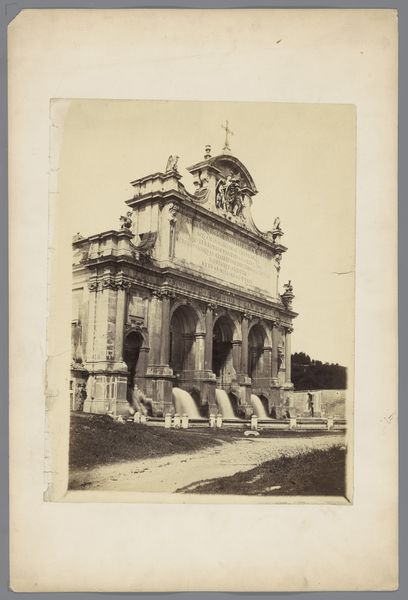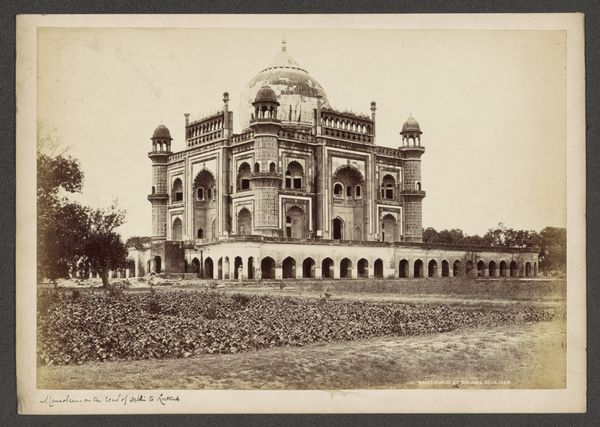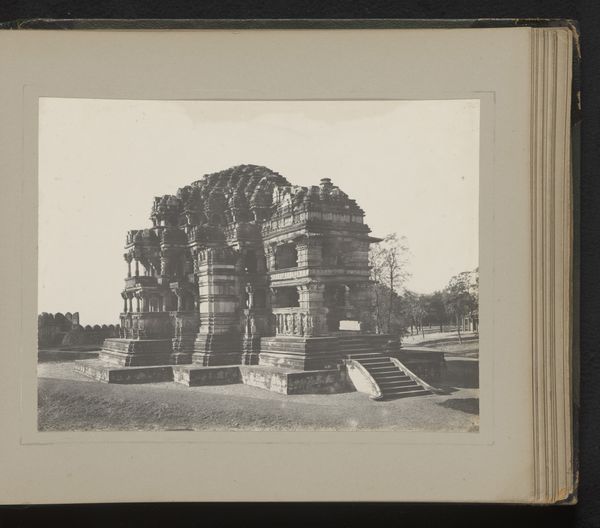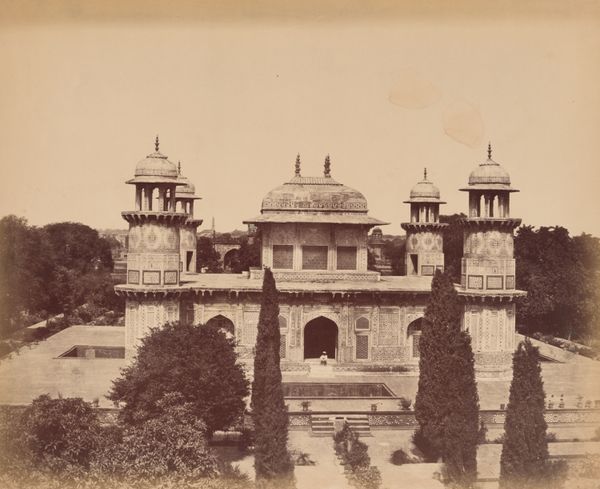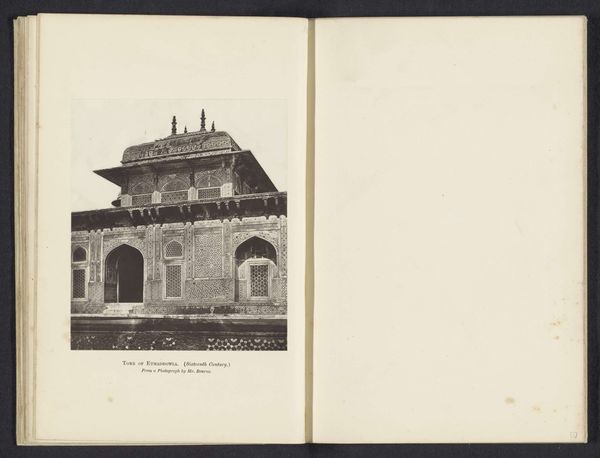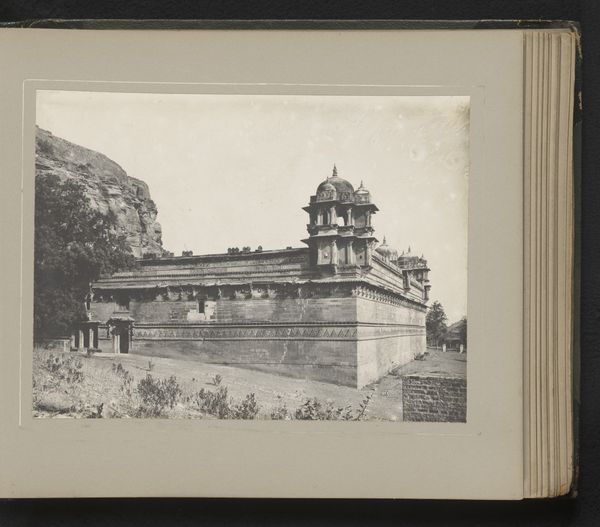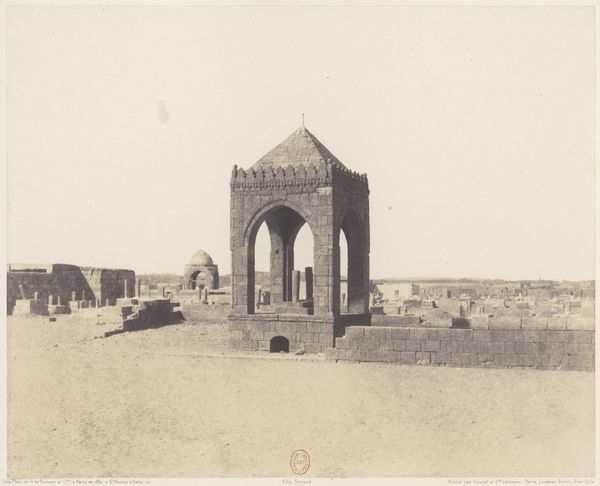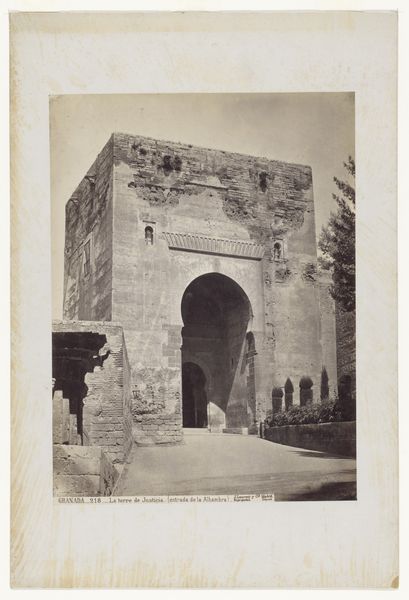
Exterieur van de poort Buland Darwaza van het paleis van Fatehpur Sikri 1862 - 1864
0:00
0:00
photography, albumen-print
#
landscape
#
photography
#
ancient-mediterranean
#
cityscape
#
islamic-art
#
albumen-print
Dimensions: height 248 mm, width 360 mm
Copyright: Rijks Museum: Open Domain
Here we see Shepherd and Robertson’s photographic depiction of the Buland Darwaza, the ‘Gate of Victory’, at Fatehpur Sikri. The immense arched gateway symbolizes triumph and power, a motif deeply embedded in the architecture of empires across time. Consider the arch itself. From Roman triumphal arches to Mughal gateways, its imposing form signifies authority, passage, and the conquering spirit. Note the arched form echoed in the windows and alcoves, creating a rhythmic pattern that reinforces the idea of ordered power. This pattern has reappeared throughout history, from ancient temples to modern monuments, evolving yet retaining its psychological impact. The Buland Darwaza speaks to a collective memory of strength and dominion. The subconscious appeal of the image lies in its scale and symmetry, evoking a sense of awe and perhaps even a touch of intimidation. This visual language transcends cultures, tapping into primal human responses to power and grandeur. Thus, the symbols recur and transform. Like an echo through the ages, the triumphal arch evolves in shape and context, yet its core meaning persists, adapted to new eras and cultural landscapes.
Comments
No comments
Be the first to comment and join the conversation on the ultimate creative platform.
